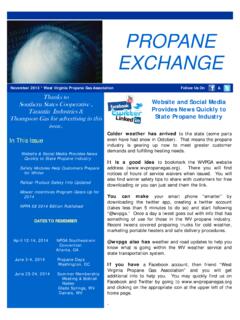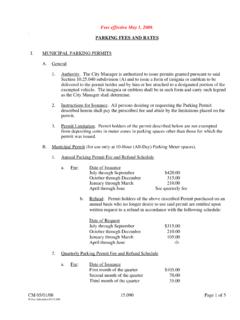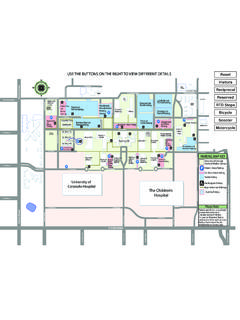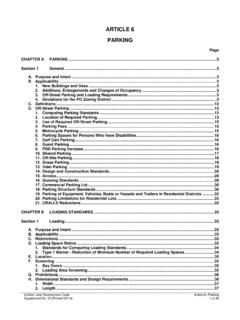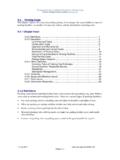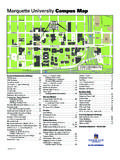Transcription of Spring 2013 Parking Precautions Indoor and Outdoor
1 Inside .. Parking In Public Garages ..Page 2 Parking in CompanyControlled Garages ..Page 3 Parking Outdoors ..Page 4 Spring 2013 Parking Precautions Indoor and OutdoorArticles in this publication are for information only. Nothing in this publication is to be construed as setting standards or requirements. Please consult with appropriate regulatory and rulemaking bodies for all legal are the proper pro-cedures for dealing with ve-hicles loaded with substantial amounts of propane within an enclosed structure such as a garage?Two recent accidents that occurred near-ly 2,000 miles apart clearly il-lustrate poten-tial for serious consequences when propane evacuates from inside a con-tainer into an enclosed March 8th, a fully loaded bobtail (according to media ac-counts) was involved in a fire at a West Virginia service ga-rage that completely destroyed the garage and threatened surrounding structures and property.
2 The fire burned for days and forced the closure of the highway in proximity of the garage. Firefighters kept water on the tank in an effort to keep it cool as pro-pane evacuated the tank and fueled the quite a week earlier in Utah, on March 2, a pair of truck-mounted liquid pro-pane tanks failed to maintain pressure, allowing all of their contents to fill a business that was demolished in an explosion. The explosion also damaged four homes and two-dozen industrial buildings. Investigators determined that a combined 450 gallons to 475 gallons of liquid propane escaped from two 250-gallon propane tanks mounted on a truck inside the business shop, according to the assistant fire chief, who said that escaping propane mixed with air inside the shop until it reached an ig-nitable mixture.
3 He identified six possible ignition sources. The damage for the Utah ac-cident was estimated at around $40 million. Fortunately, there was no loss of life or sig-nificant injury reported with either can these types of occurrences be avoided? We will highlight Precautions pre-scribed by NFPA-58 that speak to the handling of pro-pane vehicles parked within structures. A garage in Utah was destroyed along with several surrounding buildings when propane tanks on a truck that was parked inside the garage fueled an explosion. Think Safety!Page 2 Spring 2013 Parking Inside Public Garages:Section of the 2011 edition of NFPA-58 focuses on cargo tank vehicles to be parked indoors.
4 Usually these instances will occur at public buildings or garages when it is necessary to repair the portable containers must be removed prior to the ve-hicle being moved , there are two op-tions involving a cargo tank vehicle, either of which may be cumbersome depending on the circumstances. However, both options are significantly better than a possibly tragic option involves re-moving all propane from the following: cargo tank, piping, pump, meter, hose, and all other related pressure in the delivery hose must be reduced to the atmospheric pressure. All valves must be closed prior to the vehicle being moved in-doors and the delivery hose or valve outlets must be plugged or capped prior to moving the vehicle two will likely only be pos-sible during regular business hours and not if the vehicle is left for an extended period.
5 This option requires that either the driver or a quali-fied representative stay with the vehicle for as long as the vehicle is parked within the following provisions also ap-ply to option two prior to the vehicle being taken indoors:All leaks to the vehicle s propane system must be primary shutoff valves on the cargo tank, portable containers and other propane containers must be propane must be re-moved from the piping, pump, meter, delivery hose, and any related equipment and the pressure reduced to atmo-spheric delivery hose or valve outlets must be plugged or container may be lo-cated near a source of heat or within a direct path of the hot air blown from a blower-type heater as heating of any liquid would increase pressure and could potentially lead to a release by a relief containers, including the cargo tank.
6 Must not be overfilled. This should be veri-fied by gauge or by weight de-pending on which is the repair work to be done is on the cargo tank it-self, there is only one option. All propane must be removed from the tank and piping. The system must be thoroughly purged before the vehicle is moved of the 2011 edition of NFPA-58 focuses on cargo tank vehicles to be parked public or private service garages during service or other portable con-tainers must be removed prior to the vehicle being moved options involving a cargo tank Option 1: Remove all propane from the fol-lowing: cargo tank, piping, pump, meter, hose, and all other re-lated 2: Either the driver or a qualified representative must stay with the vehicle for as long as the ve-hicle is parked within the Safety!
7 Page 3 Spring 2013 Parking Inside Company Controlled Structures:Vehicles containing pro-pane may be parked within company owned or controlled structures if first the building meets the following criteria, according to Section 10 of the 2011 edition of NFPA-58:It must be of no more than one story and have walls, floors, ceilings and roofs con-structed of noncombustible exterior walls and ceil-ings must either be construct-ed of lightweight material de-signed for explosion venting, or if they are constructed of heavy material such as brick, concrete blocks, or reinforced concrete, then the walls must be equipped with explosion venting windows that have an explosion venting area of at least one foot squared for each 50 cubic feet of enclosed the building meets the requirements of Chapter 10.
8 The following provisions must be met for the vehicle under Section of the 2011 edition of NFPA-58 prior to moving the vehicle into the building:The public must be ex-cluded from the building must be ventilated at floor level in all parts of the building where the vehicle is to be leaks in the vehicle s propane system must be primary shutoff valves on the cargo tank or portable containers on the vehicle must be closed and the delivery hose outlets plugged or capped to contain system the vehicle runs on pro-pane, the primary shutoff on the engine fuel container must be closed while the vehicle is propane containers must be located away from any According to Section 10 of the 2011 edition of NFPA-58.
9 A company-controlled building must meet the criteria listed below before a vehicle containing propane can be garaged in that must be of no more than one story and have walls, floors, ceilings and roofs constructed of noncombustible if they are constructed of heavy material such as brick, concrete blocks, or reinforced concrete, then the walls must be equipped with explosion venting windows that have an explosion venting area of at least one foot squared for each 50 cubic feet of enclosed of heat and out of the path of heat being blown from a blower-type propane container, in-cluding the cargo tank, must not be overfilled.
10 The fill amount must be gauged or weighted, depending on which is applicable. Especially during the winter, the temperature within the structure could be significantly higher than the Outdoor temperature. The higher temperature would raise the pressure within the container and could potentially cause a pressure relief valve release if the there is not suf-ficient space available in the exterior walls and ceilings must either be constructed of lightweight material designed for explosion venting, Think Safety!Page 4 Spring 2013 Tom Osina: Executive Director107 S. West Street, #110 Alexandria, VA 22314 Phone: 703/530-9772 Fax: 703/530-9653 Web address: Email address: Parking Outdoors in Public Places: Parking outdoors can mean restrictions for propane cargo vehicles as instance, the driver can t just park his truck unattended on a street or road, but he can leave it unattended if the absence involves any of the following activities considered to be part of his normal duties such as stops for meals or rest stops during the day or driver cannot park his truck in a congested area.

